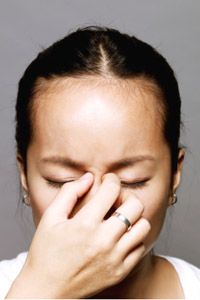Ashe juniper is erroneously called mountain cedar even though it is not a cedar at all but an evergreen shrub. It is common in the southern and western United States and its pollination occurs from roughly November through March. The mountain cedar is the only tree that pollinates in the winter and it causes severe allergies often referred to as "Cedar Fever."
Allergies are a response by your immune system to a foreign substance -- a food, an insect bite or in the case of Cedar Fever, pollen (microscopic plant cells that are carried through the wind in order for the plants to reproduce). Your immune system mistakenly identifies the allergen (the pollen) as harmful to your body and tries to fight it off.
Advertisement
Symptoms of a cedar allergy may include itchy, watery eyes, a sore or scratchy throat, coughing, wheezing, a runny nose, nasal congestion and sneezing. As a result of months of symptoms you may begin to lose sleep and feel fatigued, lose concentration, become less productive at work or at school, experience irritability or emotional distress and find your everyday activities limited.
Different people experience different allergy symptoms at different levels of severity. You may experience allergy symptoms all year round but they may worsen at certain times of the year, such as in winter and spring during mountain cedar pollination.
If you experience allergy symptoms, you should make an appointment with an allergist in order to get properly diagnosed and find out exactly what you're allergic to. Your doctor may prescribe medications to help you with your symptoms. There are also some things you can do to keep your Cedar Fever symptoms to a minimum. Try to stay indoors on days when the pollen count is high (you can check your local weather report for the daily pollen count). If you do go outside, change your clothing and take a shower to remove any pollen that came inside with you. Keep your windows closed and run your air conditioner on "recirculate" to prevent pollen-filled air from coming inside.
Advertisement

